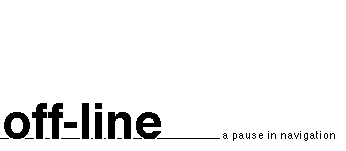“Small” bits of news can teach us interesting
lessons. On May 24, 2001, there was one more of many
“virus alerts”. It wasn’t reported by mainstream
media and didn’t cause a planet-wide scare. It wasn’t much of
an event. There were no reports of major damage to poorly
protected large organizations. So what’s so interesting? The
nature of the problem, which is quite different from others.
This is the story. An “urgent” message
circulated quite widely online. Tone and style made it look
like one of many hoaxes. But it wasn’t. The message said that
there was a virus in the wild called SULNFBK.EXE.
It said that it was a “time bomb” and would explode the
next day. It also said that it was not identified by any antivirus –
and indeed it wasn’t. Several people were scared into removing
or renaming that file. But doing so didn’t solve the problem.
Some software functions began to misbehave. So the virus was in action,
and had found a way of disguising itself? No.
Where’s the catch? It’s very simple. There was no virus.
“Sulnfbk” is an obscure file hidden somewhere in
the windows system. People self-inflicted damage by removing
or renaming it.
This would be just a joke if several people – not
inexperienced or untrained – hadn’t fallen into the trap. The
author of the trick may not be much of a technology expert...
but he or she has a good understanding of human nature.
What do we learn from this? That most alerts are hoaxes –
and we should neither heed them or spread them before
double-checking? That we should not remove or disable a file
without knowing exactly what it is? Of course – as we’ve
known for years. But it’s not as simple as that.
This is one of many “cultural viruses” that
spread in all information systems – old an new. And there is
an exaggerated habit of spreading them without checking.
Pseudo-news (false or deformed) can be generated in may ways.
It can start as a joke, a mistake, a case of superficial
reporting – or deliberate manipulation. There is no way of
wiping out these diseases; they exist and will continue to
multiply. What’s worrying is that they survive and expand
with such uncontrolled success.
If there were no other problems than a not very harmful,
and easily solved, computer malfunction... we could just
laugh and forget it. But there is a much bigger and nastier
problem.
There are many people, and big interests, that are
blaming the internet. The net, they say, is the cause of all
evils, because it can convey “uncontrolled”
information. It should be tamed, censored, subjugated. This
isn’t just stupid; it’s very dangerous.
Of course the reverse is true. The internet, if used well, is our
best tool against inadequate or misleading information
in mainstream media. But a lot lies in that little word, well.
And (as in almost anything) there are two sides of the coin.
On the one side, we must be very determined, and always
watchful, against any attempt to limit our freedom. Even in
the most democratic and free countries and societies.
On the other side, we need to be more careful about how
we handle things on the net. Of course we should avoid
spreading hoaxes, false alerts, spam, chain letters and other
polluting materials. But – even more importantly –
we should spare no efforts to refine and improve our use of this tool.
And so have better information (and better understanding) than we
could ever get from the standardized, homogenized, manipulated
and often distorted picture offered by mainstream media.



